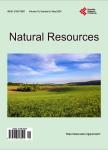A Field Study in the Status and Threats of Cultivation in Kimana and Ilchalai Swamps in Amboseli Dispersal Area, Kenya
A Field Study in the Status and Threats of Cultivation in Kimana and Ilchalai Swamps in Amboseli Dispersal Area, Kenya作者机构:不详
出 版 物:《Natural Resources》 (自然资源(英文))
年 卷 期:2011年第2卷第4期
页 面:197-211页
学科分类:1002[医学-临床医学] 100214[医学-肿瘤学] 10[医学]
主 题:Amboseli Ecosystem Irrigated Agriculture Kenya Maasai Livelihoods Resource Conservation Swamps
摘 要:The scarcity of water and dependence of local communities on wetlands for resources and services is a common occurrence in dry rangelands such as Amboseli in Kenya. There are only a few swamps outside Amboseli National Park available to the Maasai, livestock and wildlife. Such swamps may disappear in the near future because of conversion to cultivation. This study established the current size and threats to Kimana and Ilchalai near Amboseli National Park. Swamps were regularly used by over 15 large mammal species among them elephants, buffalo, wildebeest, zebra, gazelles and hippopoatums. However, only 15.7% of Kimana Swamp and 36.1% of Ilchalai Swamp remained unconverted to cultivation, with the rest of the remaining swamp area converted to agriculture. Cultivation was mainly done by non–Maasai land leasers, and for mainly commercial purposes. Swamps were converted because of adequate and free water, cheap lease fee, and their fertile soils. Although concerned with swamp conversion, most cultivators were ready to expand cultivation in other swamps. These findings demonstrate how unsustainable resource use and swamp conversion can seriously threaten critical resources for local livelihoods and wildlife conservation.



